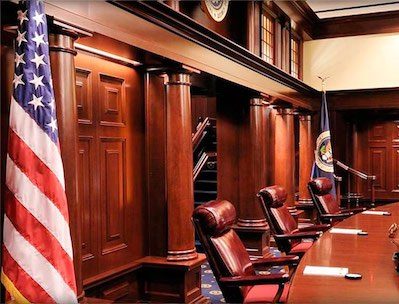“It is well-settled that the inclusion of an inherent, but undisclosed, property of a composition does not render a claim to the composition nonobvious . . . A patent can be invalid based on inherency when the patent itself makes clear that a limitation is ‘not an additional requirement imposed by the claims . . . , but rather a property necessarily present.’” – CAFC decision
 On January 9, the Court of Appeals for the Federal Circuit (CAFC) affirmed a decision of the U.S. District Court for the Northern District of Illinois, holding claim 6 of U.S. Patent No. 8,648,106 (the ‘106 patent) invalid as obvious. The ‘106 patent, owned by Hospira, Inc. (Hospira), is one of many patents covering Hospira’s dexmedetomidine products under the brand Precedex, such as the ready-to-use Precedex Premix product. Hospira sued Fresenius Kabi USA LLC (Fresenius) for infringement of claim 6 of the ‘106 patent, over its filing of an Abbreviated New Drug Application (ANDA) regarding its ready-to-use generic dexmedetomidine product.
On January 9, the Court of Appeals for the Federal Circuit (CAFC) affirmed a decision of the U.S. District Court for the Northern District of Illinois, holding claim 6 of U.S. Patent No. 8,648,106 (the ‘106 patent) invalid as obvious. The ‘106 patent, owned by Hospira, Inc. (Hospira), is one of many patents covering Hospira’s dexmedetomidine products under the brand Precedex, such as the ready-to-use Precedex Premix product. Hospira sued Fresenius Kabi USA LLC (Fresenius) for infringement of claim 6 of the ‘106 patent, over its filing of an Abbreviated New Drug Application (ANDA) regarding its ready-to-use generic dexmedetomidine product.
‘106 Patent Claim 6
Dexmedetomidine hydrochloride, a sedative patented in 1980 (U.S. Patent No. 4,910,214), has been marketed up until recently in either 100 ug/mL concentrate form, requiring the drug to be diluted before intravenous administration, or as Dexdomitor, a ready-to-use 500 ug/mL formulation sealed in a glass vial with a rubber stopper, with a shelf life of two years. Responding to stability studies conducted to measure the loss in drug potency, the ‘106 patent claims a process by which a 4 ug/mL dexmedetomidine hydrochloride formulation can be manufactured in a way that the compound remains stable and active after prolonged storage. In this process, an atmosphere of filtered nitrogen gas is maintained in the head space of the surge bottle, and the headspace of the container is gassed with nitrogen to achieve not more than 5% of oxygen in the headspace. In these conditions, the ‘106 patent claims a liquid compound that exhibits no more than about 2% decrease in the concentration of dexmedetomidine. During a five-day bench trial, the district court held that Fresenius had proven by clear and convincing evidence that claim 6 would have been obvious over the prior art, because the “about 2%” limitation is inherent in a 4 ug/mL formulation.
Inherency Doctrine
The CAFC did not the district court’s ruling clearly erroneous. Addressing Hospira’s argument that the court erred in its application of the inherency doctrine by considering the inherent properties of non-prior art embodiments, the court held that extrinsic evidence can be used to demonstrate what is “necessarily present” in a prior art embodiment, even if the extrinsic evidence is not itself prior art. Additionally, the court held that the work of the inventor/patentee can be used as evidence of inherency where it elucidates what the prior art consisted of. Hospira also argued that the district court misapplied the law of inherency by considering only the samples in the record prepared by the manufacturing process in Example 5. In response, the CAFC stated that importing the unclaimed, manufacturing limitations of Example 5 into the claim which has no such limitations would be improper. The CAFC thus found that the district court did not misapply the law of inherency by considering the samples in the record without regard to the process by which those samples were prepared.
Drug Stability
The CAFC then turned to the “about 2%” limitation. The district court reviewed evidence of 20 samples of the 4 ug/mL preferred embodiment, finding that each one met the “about 2%” limitation. Additionally, expert testimony concluded that because concentration does not affect the stability of dexmedetomidine, the drug is stable at any concentration. Hospira argued that the samples in the record are not representative of every possible formulation of the 4 ug/mL preferred embodiment. However, the CAFC found that Hospira did not present evidence of a sample failing to meet the 2% limitation, nor did Hospira present evidence showing that the manufacturing process of Example 5 was the reason why all tested samples met the “about 2%” limitation. The CAFC thus upheld the district court’s decision finding that stability was not affected simply by adding a solvent to dilute the stable drug from 100 ug/mL to 4 ug/mL. Next, Hospira argued that the district court did not conduct the correct inherency analysis because the court applied the “reasonable expectation of success” standard as opposed to the “necessarily present” standard. The CAFC agreed with the argument made by Fresenius that the district court completed its inherency analysis when it found that the “about 2%” limitation was necessarily present in the prior art, based on evidence of tested samples in the record.
Finally, the CAFC found that the above conclusions supported a finding that claim 6 of the ‘106 patent was obvious. Citing Atlas Powder Co. and In re Kubin, the court said:
“It is well-settled that the inclusion of an inherent, but undisclosed, property of a composition does not render a claim to the composition nonobvious . . . A patent can be invalid based on inherency when the patent itself makes clear that a limitation is “not an additional requirement imposed by the claims . . . , but rather a property necessarily present.”
Therefore, held the CAFC, because claim 6 did not recite any manufacturing limitations related to stability or an added component that enhances stability, the district court did not err in finding that claim 6 simply recited a composition, and was thus invalid as obvious over the prior art.
Fresenius was represented by a team led by Imron Aly of Schiff Hardin and Hospira was represented by Adam Unikowsy of Jenner & Block.

![[IPWatchdog Logo]](https://ipwatchdog.com/wp-content/themes/IPWatchdog%20-%202023/assets/images/temp/logo-small@2x.png)

![[[Advertisement]]](https://ipwatchdog.com/wp-content/uploads/2024/04/Patent-Litigation-2024-banner-938x313-1.jpeg)
![[Advertisement]](https://ipwatchdog.com/wp-content/uploads/2024/04/UnitedLex-May-2-2024-sidebar-700x500-1.jpg)
![[Advertisement]](https://ipwatchdog.com/wp-content/uploads/2024/04/Artificial-Intelligence-2024-REPLAY-sidebar-700x500-corrected.jpg)
![[Advertisement]](https://ipwatchdog.com/wp-content/uploads/2024/04/Patent-Litigation-Masters-2024-sidebar-700x500-1.jpg)

![[Advertisement]](https://ipwatchdog.com/wp-content/uploads/2021/12/WEBINAR-336-x-280-px.png)
![[Advertisement]](https://ipwatchdog.com/wp-content/uploads/2021/12/2021-Patent-Practice-on-Demand-recorded-Feb-2021-336-x-280.jpg)
![[Advertisement]](https://ipwatchdog.com/wp-content/uploads/2021/12/Ad-4-The-Invent-Patent-System™.png)






Join the Discussion
No comments yet.